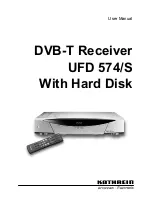
Data Logs
Chapter 5
WAAS G-III Reference Receiver User Manual Rev 1
89
5.2.2.3
GNSS Time Status
All reported receiver times are subject to a qualifying time status. This status gives you an indication of how
well a time is known, as shown in
Table 30
.
Table 30: GNSS Time Status
There are several distinct states that the receiver will go through:
1. UNKNOWN
2. COARSE
3. FINE
On start up, and before any satellites are being tracked, the receiver cannot know the current time. As a result,
the receiver time starts counting at GNSS week 0 and second 0.0. The time status flag is set to
UNKNOWN
.
After the first ephemeris is decoded, the receiver time is set to a resolution of ±10 milliseconds. This state is
qualified by the
COARSE
time status flag.
When the receiver knows its position and range biases are being calculated, the internal clock model will begin
modelling the position range biases and the receiver clock offset.
Modelling continues until the model is a good estimation of the actual receiver clock behavior. At this time, the
receiver time will again be adjusted, this time to an accuracy of ±1 microsecond. This state is qualified by the
FINE
time status flag.
The time status flag will never improve on
FINE
. The time will only be adjusted again to within ±1
microsecond if the range bias gets larger than ±250 milliseconds.
GNSS Time Status
Description
UNKNOWN
Time validity is unknown.
COARSE
This time is valid to coarse precision.
FINE
Time has fine precision.
SATTIME
Time from satellite. This is only used in logs containing
satellite data such as ephemeris and almanac.
















































